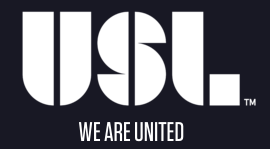By Paul Nicholson
October 10 – For the regular season just finished, the USL, the third tier of the US professional leagues, hit record aggregate attendances of 1.5 million for the season, a 40% increase on previous years. But it is not just attendances that are growing for this challenger league in the US.
The 29 team league played across two regional divisions – east and west – welcomed three new franchises to its ranks last season, and has space for more.
Jake Edwards, the English-born president of the league, said: “By 2018 we are aiming for East, West and Central divisions with 12 to 14 teams in each.”
Part of the USL expansion has been driven by 11 MLS clubs entering the league with their second teams. That in turn has helped raise the media profile of the league and the clubs in it.
“We are three years into this relationship with the MLS and it is working. They are good people, very professional. They do bring an added value. When the LA Galaxy come to town, for example, the players want to play them and the local media take an added interest,” said Edwards.
However, for Edwards the league is not about getting reflected glory from the big clubs and its MLS stars, that is just an incremental bonus. What the USL is about is creating a sustainable, multiple franchise model with strong and identifiable teams playing in a recognisable competition.
“We are in a challenger sport and are a challenger brand within that sport,” said Edwards. “We are trying to create a character for our league. It is really important to me that in 10, 20, 25 years we still have a good football club in Charlotte, or St Louis or Rochester.”
The financial model is interesting but the cost of a franchise is increasing in price with the current one-timebuy-in fee at $5 million. Unlike an MLS franchise, a USL investor owns his franchise (rather than licenses the right to play in the league) and the USL protects that franchise in its local catchment area – it will not licenses a second team in the same space.
Franchises are also tradeable and already ownership groups are selling on and, more often, bringing in new investors. Sacramento, one of the USL’s higher profile franchises and aiming to graduate upwards with the acquisition of an MLS franchise (a much chunkier $100-120 million buy-in), recently had its USL franchise valued at $78 million.
“Markets are changing. When you go in and meet the clubs and the city they know about soccer and there is a desire for the game. Most of our markets (franchise holding cities) are mid- to major markets. In a lot of these markets we are the only professional sport in town. What we are looking for in most cases is franchise holders who can help grow the league,” said Edwards.
This makes for a pretty entrepreneurial and passionate group of owners. But Edwards reckons that if a club can average 6,500 for its home games then it can be a viable business.
For its part the USL is delivering an increasingly aggressive marketing and media package for its owners. The league is investing $8 million over the next three years in boosting its media, and in particular its live broadcast distribution.
From next season all matches will be a minimum four camera shoot, with one of those cameras being broadcast via every club’s website, accessable via a subscription (probably a $5 sub).
The USL is setting up a broadcast centre in its Tampa, Florida, headquarters that will receive all the games football live, edit, package and redistribute. “We are upgrading and standardising the quality of broadcasts so they have the same look and feel. Teams will be able to offer their fans away games as well as home games,” said Edwards.
The USL has also entered into an agreement with Opta as part of its major investment in data. This will see the launch of new match centers using Opta’s widget technology. USL teams also will have the ability to integrate Opta data into its own websites and enhance the experience for fans.
As well as facilitating web integration, the Opta deal will nclude press box statistics distribution and creation of social media infographics, along with supplying consultancy around using advanced statistical elements in a centralized broadcast feed, in partnership with USL Productions.
“We are creating a digital network that will see us migrate to a new platform where we can draw league-wide content as well as providing local content,” said Edwards.
The USL already has a strong relationship with ESPN and that is being extended next season.
“There is huge potential for this sport and this league in the US. We are not encumbered by some of the restrictions of the major leagues.” Edwards and the USL are certainly ones to watch over the next few years.
Contact the writer of this story at moc.l1713934364labto1713934364ofdlr1713934364owedi1713934364sni@n1713934364osloh1713934364cin.l1713934364uap1713934364

